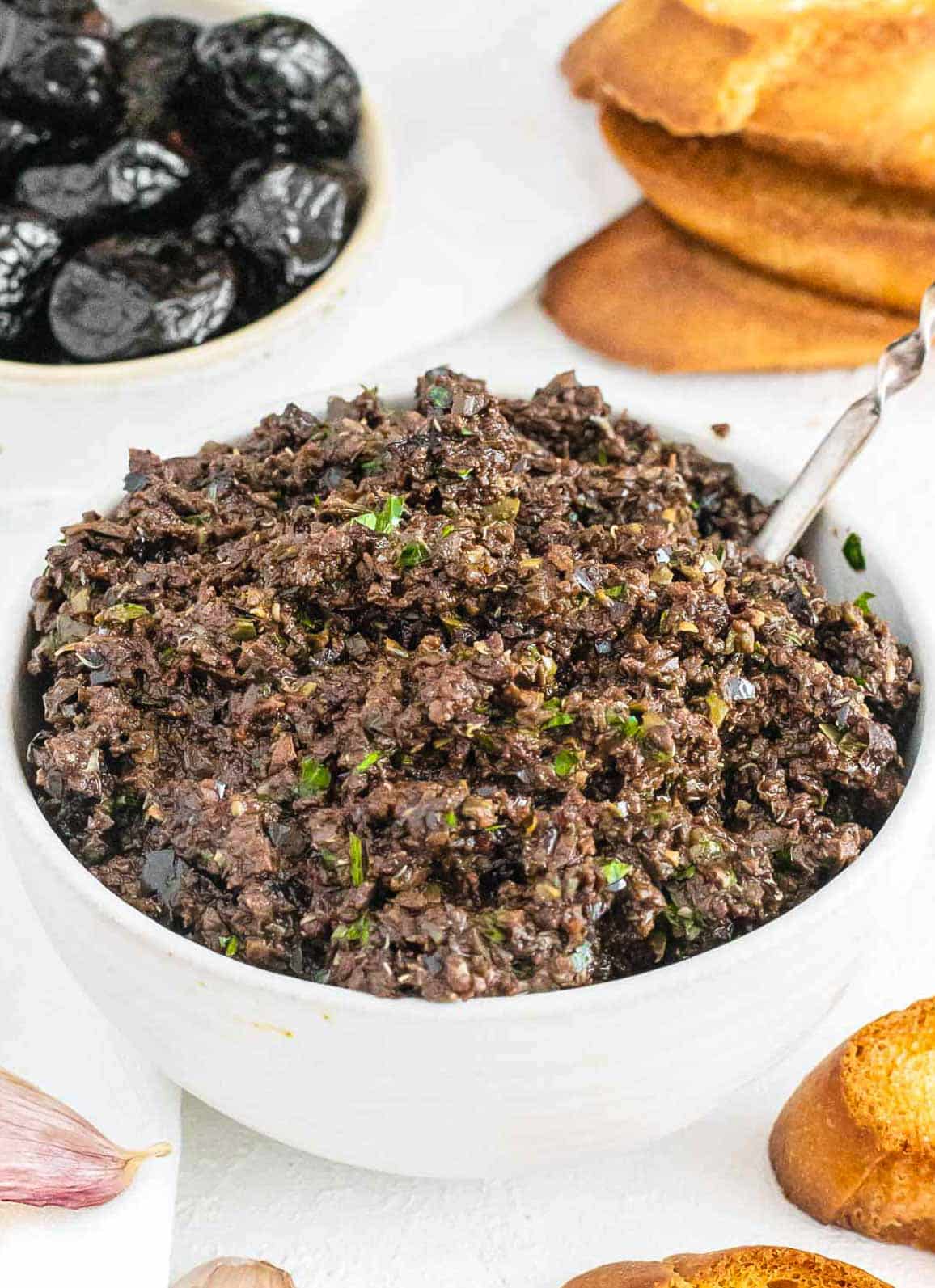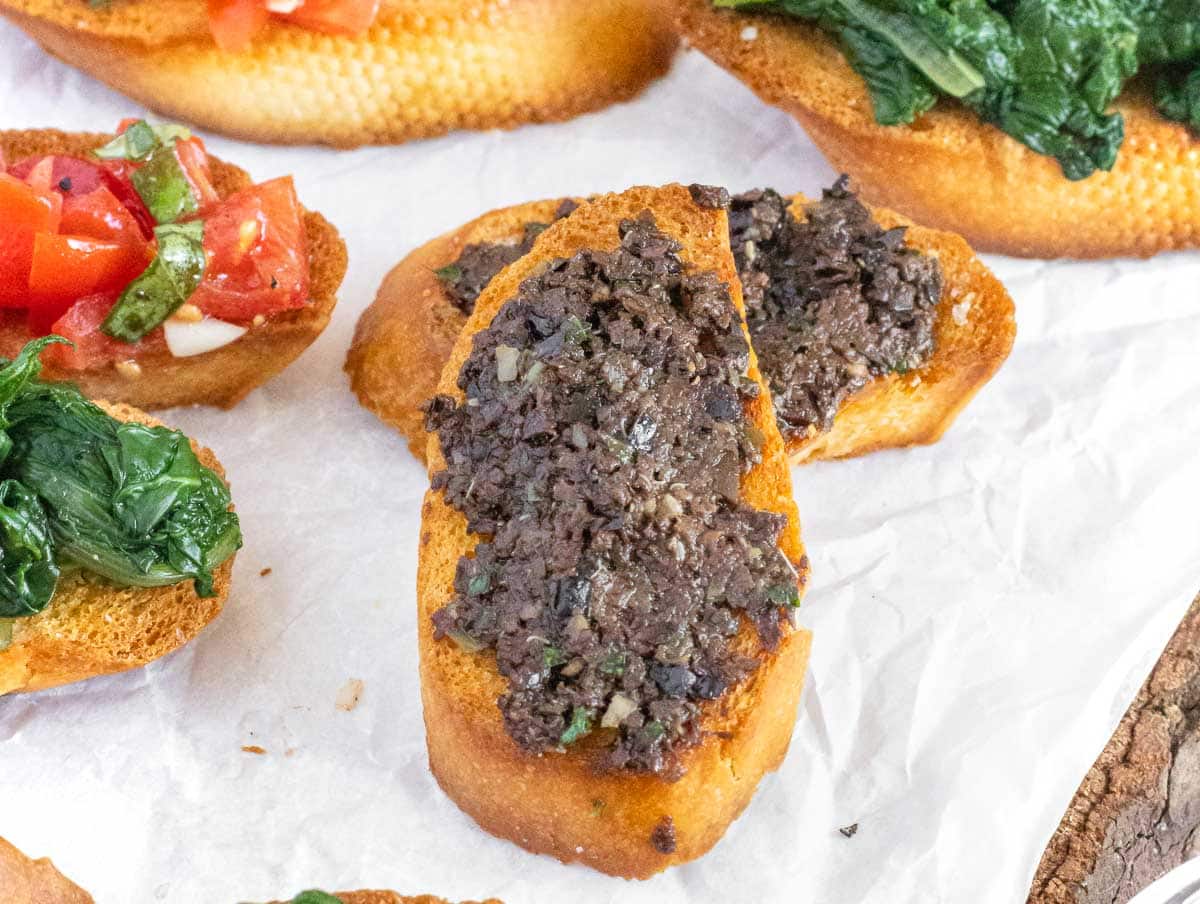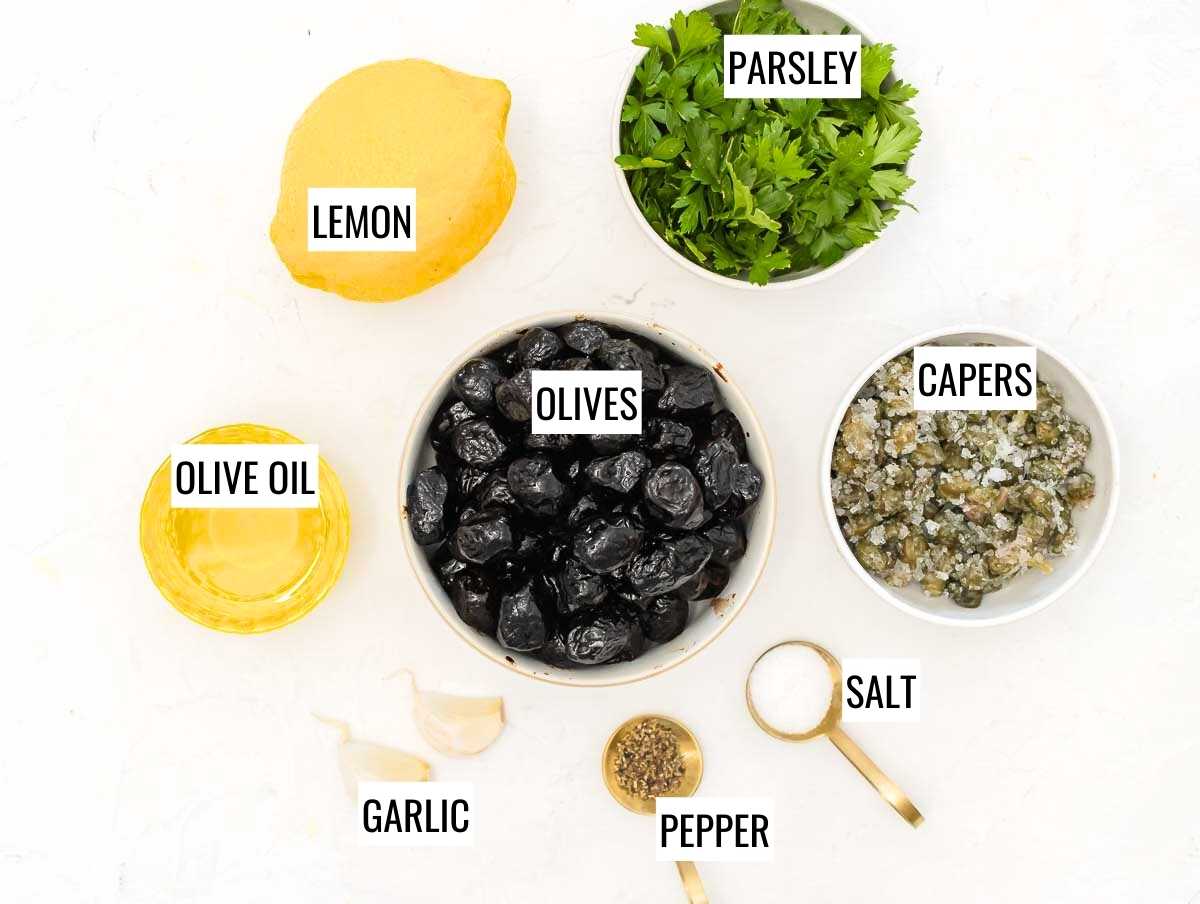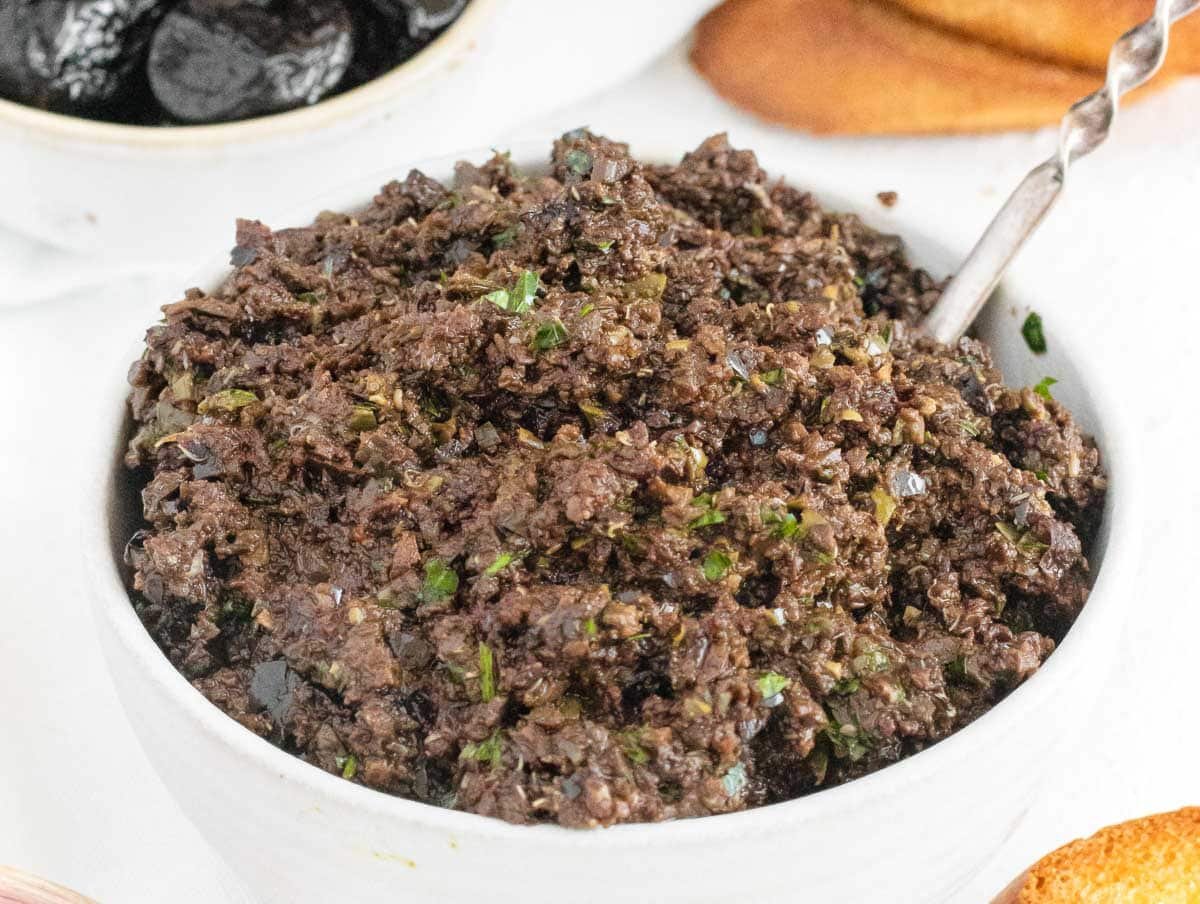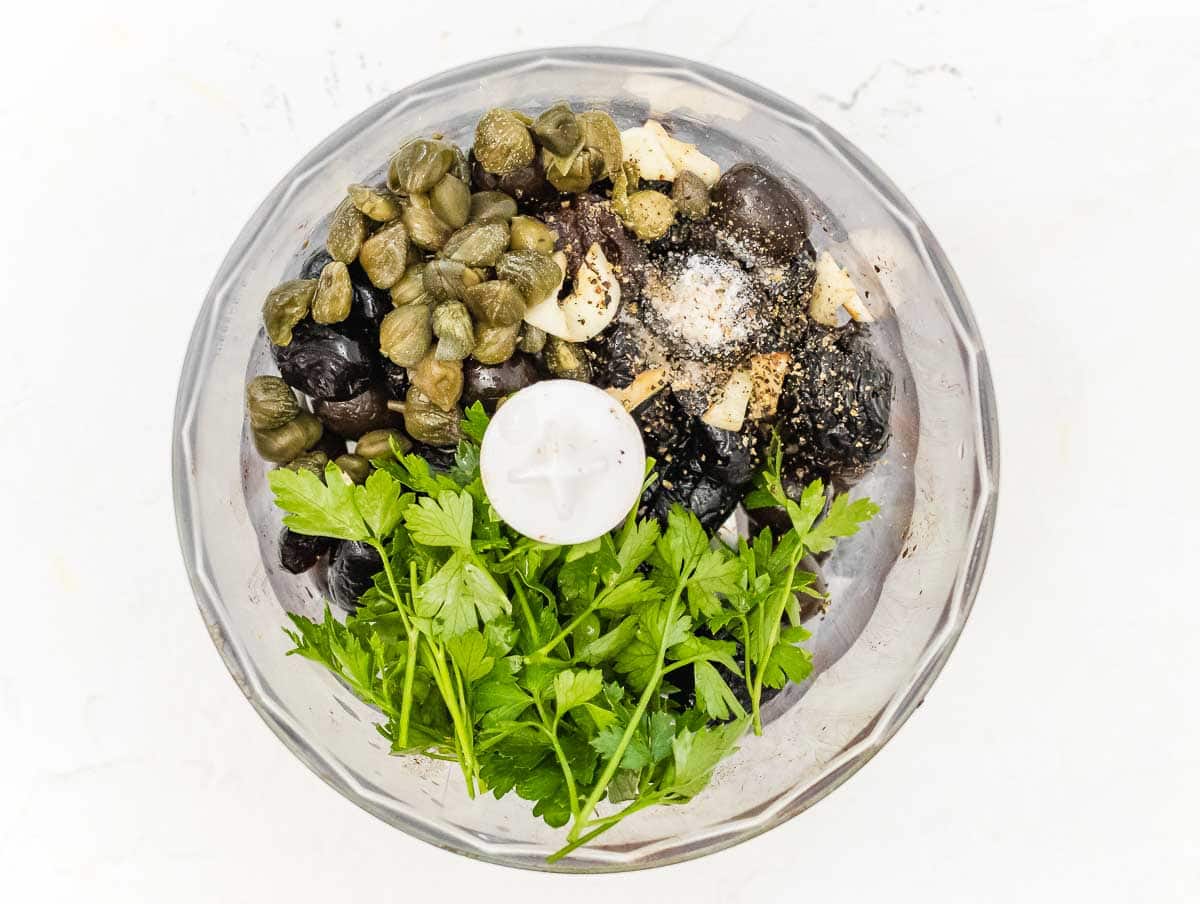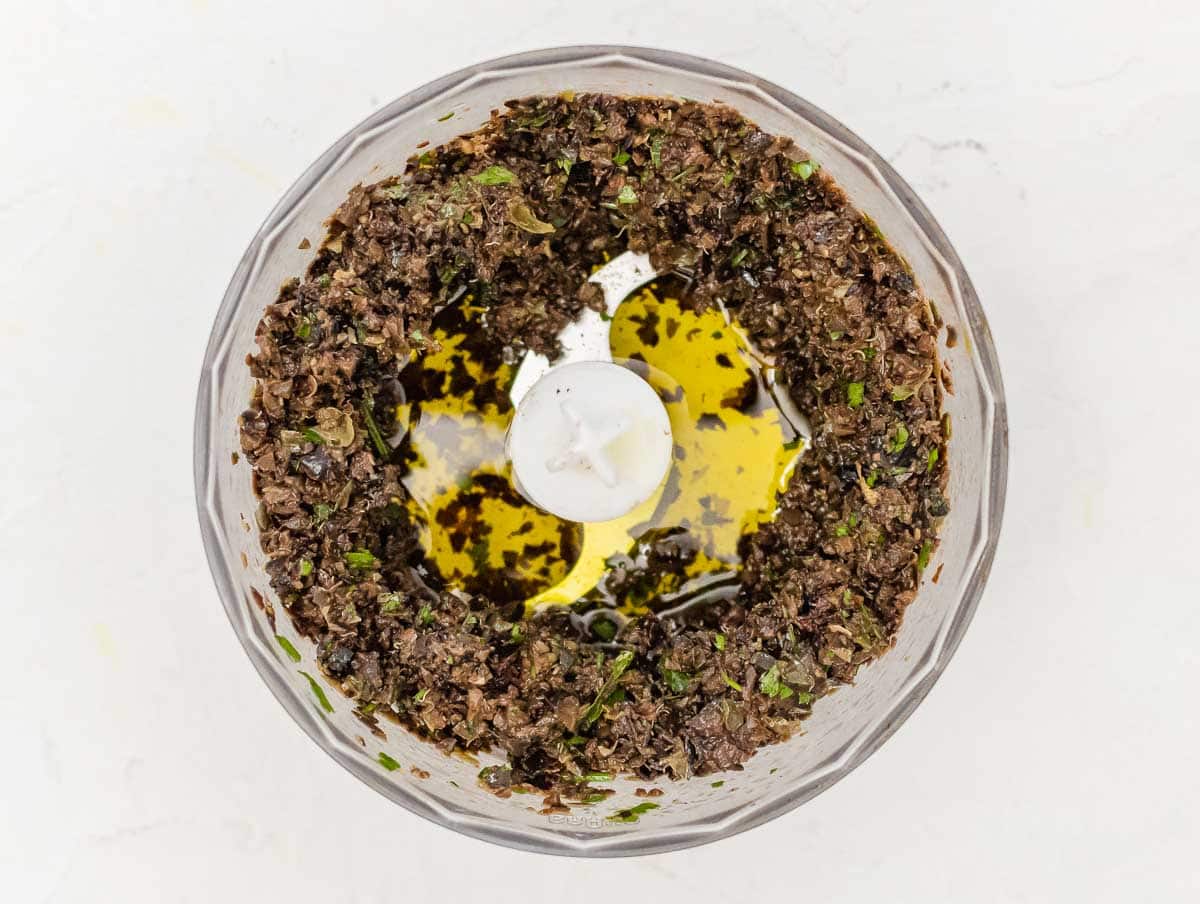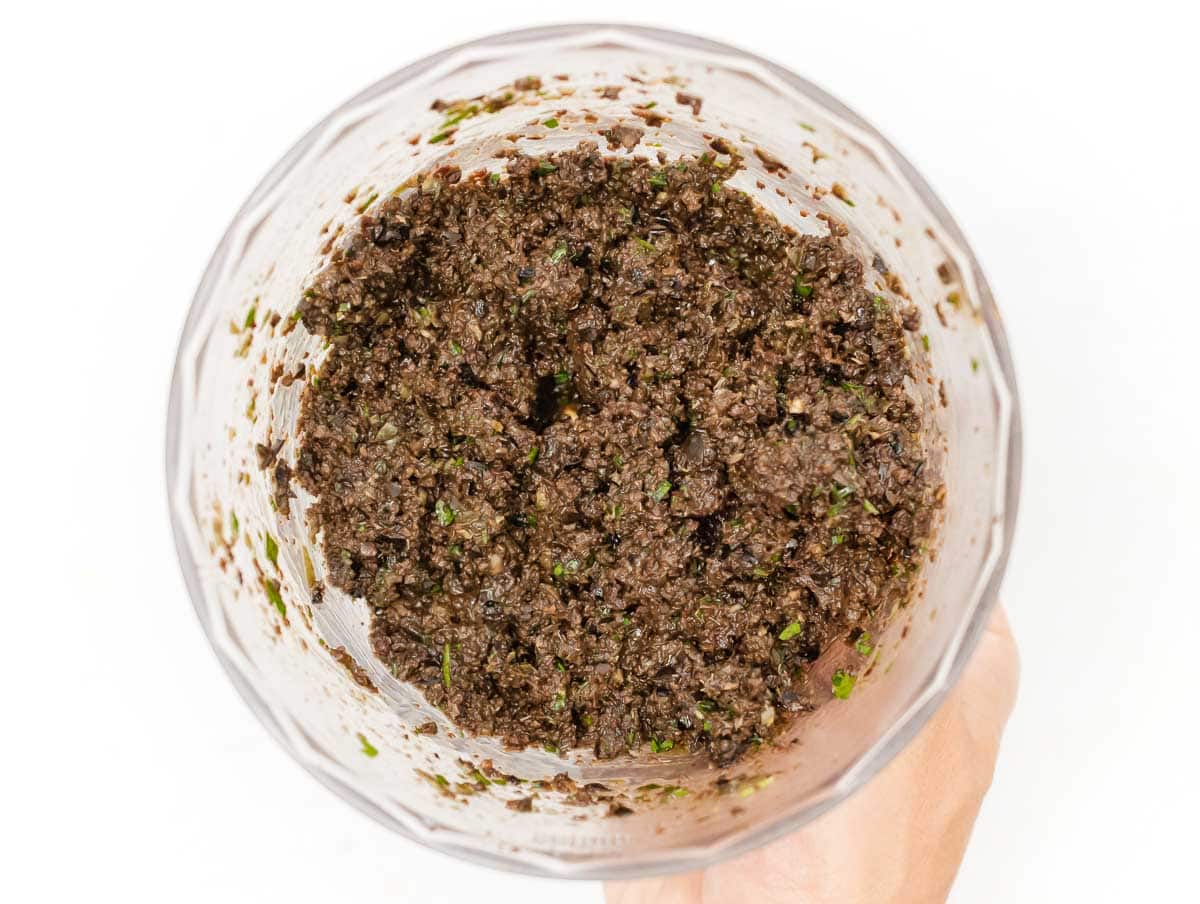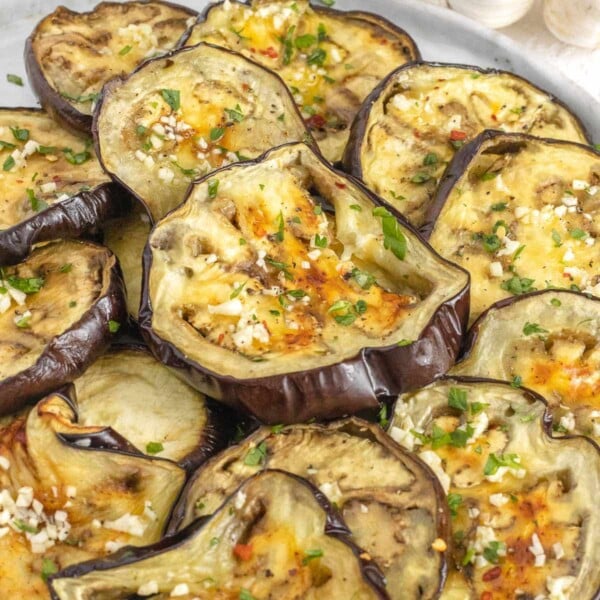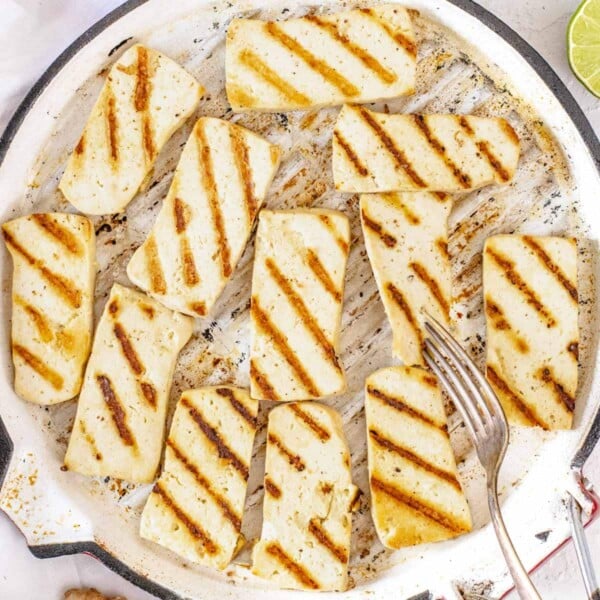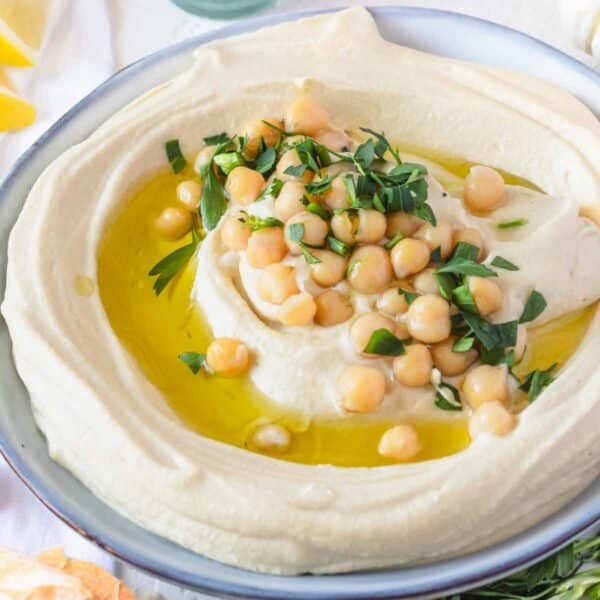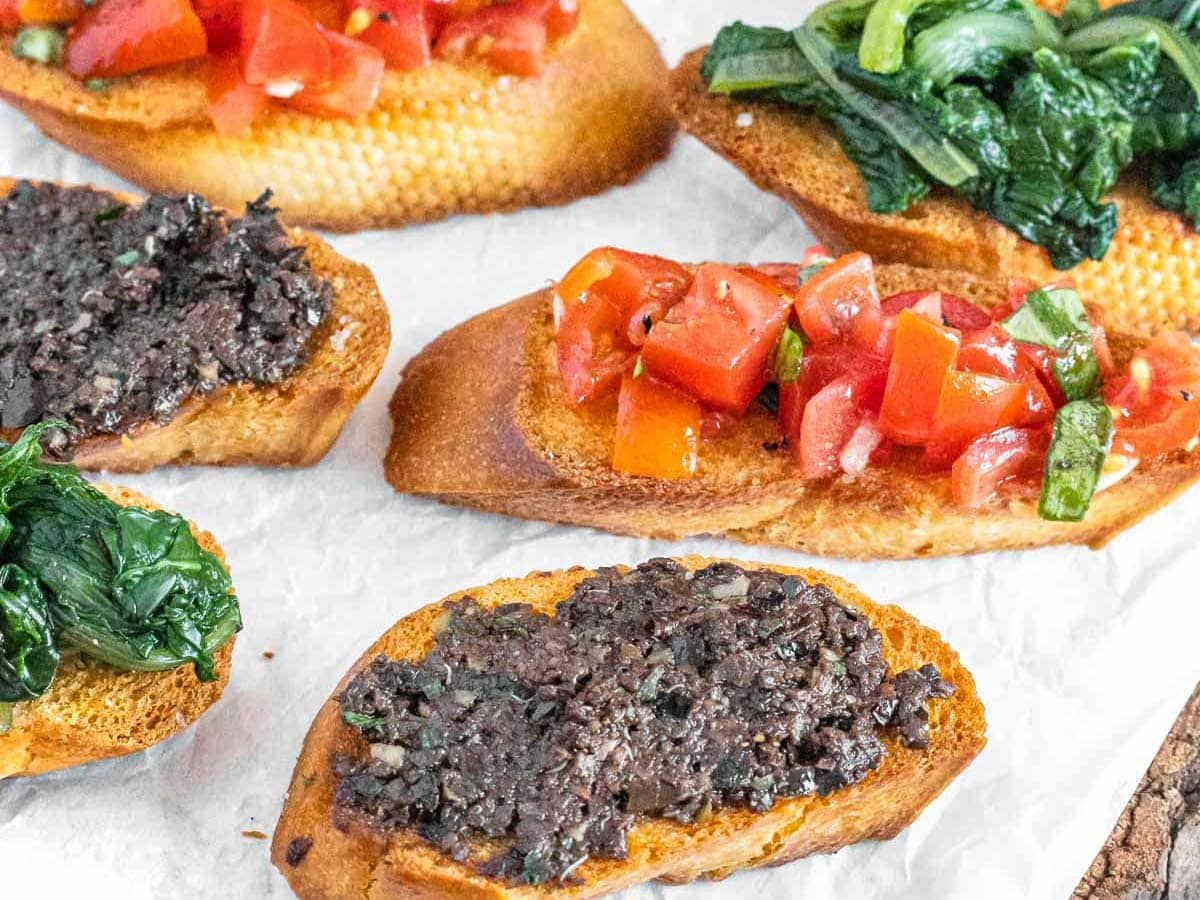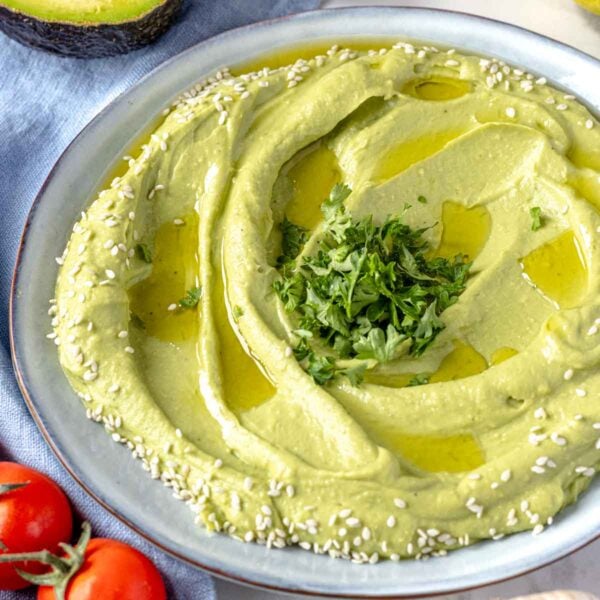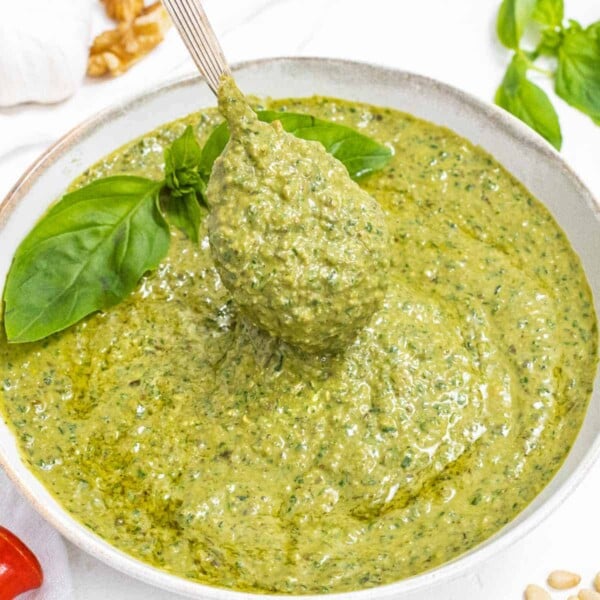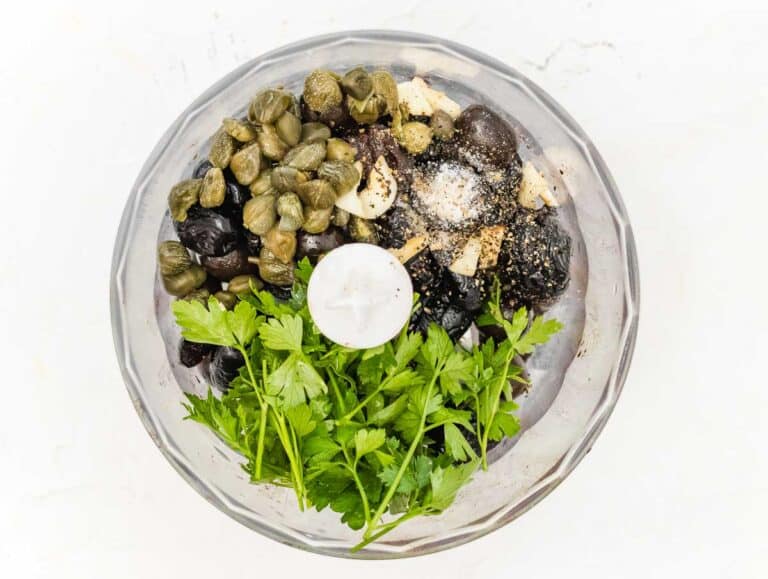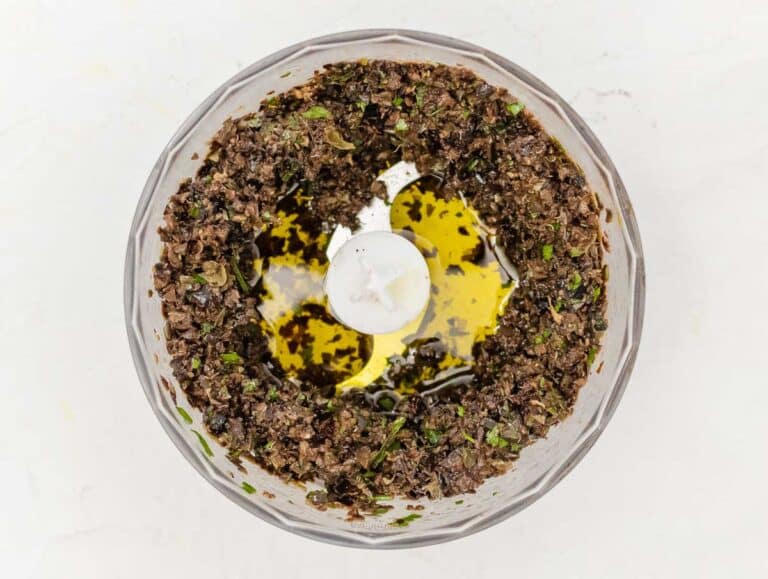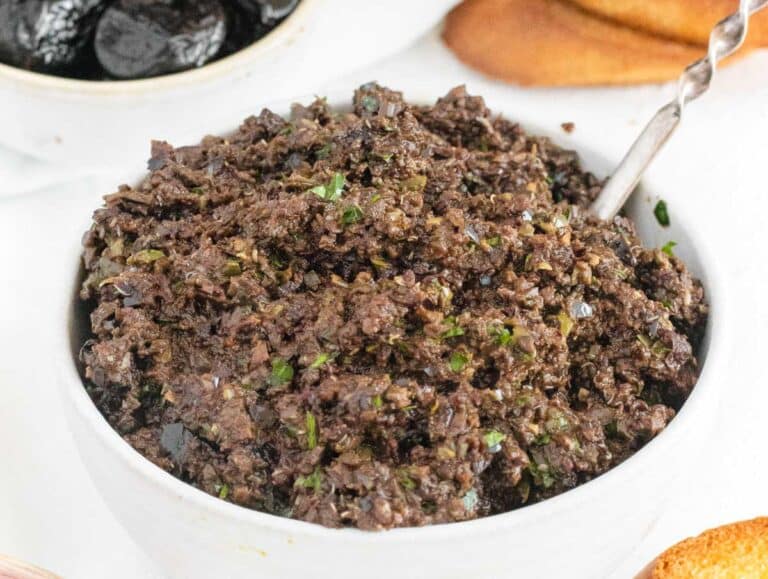With its robust flavor and velvety texture, tapenade is an excellent appetizer to impress your guests or to make your family happy. Check out our best sauce recipes.
Ingredients & Substitutions
How to make olive tapenade
Serving suggestions
Storage
More Appetizer Recipes
You can make tapenade with black olives, green olives, or a mix. Here we make the most classic version with black olives. In most traditional recipes, olive tapenade is made with a pestle in a mortar, crushing all the ingredients patiently until they turn into a coarse puree. Other recipes make it with a chef’s knife, chopping the ingredients finely and mixing them with the oil. We make it with a food processor, pulsing the ingredients together without over-blending the olives. A food processor makes a delicious tapenade in less than 5 minutes. Let’s see how to make it!Uh. Don’t forget to make this crostini recipe with this olive tapenade. They are the perfect match.
Capers
Capers are non-negotiable in this recipe. You can use capers in vinegar, olive oil, or salt (washing off the salt before blending them). The rule of thumb is one heaping teaspoon of chopped capers or 2 teaspoons of whole capers for one cup (130 grams) of pitted olives.
Olive oil
Use extra virgin olive oil if you can. A good quality extra virgin olive oil adds sweet and fruity notes that round off the intense flavor of the olives and capers.
Garlic
Garlic is optional, and often the French don’t add it in. If you like to add garlic, do so in moderation. We add very little, about 1/4 of a clove.
Parsley
Fresh parsley is optional and rarely found in original French tapenades. However, we like adding a small quantity of flat-leaf parsley to brighten this recipe. You can substitute fresh basil, fresh thyme, or other fresh herbs for parsley.
Lemon juice
Lemon juice is optional and not found in the original recipe. We like adding freshly squeezed lemon juice to lighten the tapenade. For lemon lovers, feel free to add a tiny bit of lemon zest. If the lemon is too sharp, try making a variation with a touch of grated orange zest.
Salt and pepper
Salt and black pepper are both optional. Adding them depends on how salty your capers and olives are. Have a taste before adding any salt or pepper.We don’t add anchovies fillets as they are optional. Add the pitted black olives, capers, garlic, flat-leaf parsley, and lemon juice to a food processor. Pulse a few times until you have a coarse olive purée, stopping to scrape down the sides of the food processor. Next, add the olive oil, starting with two tablespoons and up to four tablespoons. Depending on your olives, you might need to add more or less oil. Pulse a few more times until you reach your desired consistency, stopping once or twice to scrape down the edges. Taste and add salt and pepper if necessary. Your olive tapenade is ready when it has a coarse purée texture that is easy to spread. Check out our crunchy crostini recipe or bruschetta recipe to learn more. You can also use it to boost the flavor of most grilled or baked vegetables, as shown in the picture below, with roasted cherry tomatoes and grilled mushrooms. Or serve it in a bowl on a cheese board. We even tried it with dairy-free cheeses, and it was delicious.
Sandwich spread
Another delicious way of eating olive tapenade is as a sandwich spread with:
Pita bread (flour, water, olive oil, instant dry yeast, etc.) Grilled tofu (tofu, olive oil, salt, paprika, etc.) Roasted eggplant (parsley, eggplant, apple cider vinegar, garlic, etc.) Marinated bell peppers (bell pepper, olive oil, basil, balsamic vinegar, etc.) Hummus (cumin, chickpeas, tahini, lemon juice, garlic, paprika, etc.)
For example, we often have it for breakfast and sometimes as a snack between two slices of whole-grain bread with hummus and ripe tomatoes.
Condiment
You can also use it as a tasty pasta sauce or as a condiment for:
Pita Bread
Roasted Eggplant
Grilled Tofu
Hummus
Pasta salad (cherry tomatoes, cucumber, corn, white beans, bowtie pasta, etc.) Rice salad (olives, rice, pickled cucumber, cherry tomatoes, parsley, etc.) Barley salad (roasted vegetables, sundried tomatoes, barley, etc.) Simple side salad (mixed leaves, tomatoes, olive oil, etc.) Homemade gnocchi or sweet potato gnocchi (flour, potato, sage, etc.)
Refrigerator: store leftover tapenade in an airtight container (we recommend a mason jar) in the fridge for up to one week. You can serve it cold straight from the refrigerator. Freezer: you can freeze tapenade in a small jar for up to 3 months. Then, thaw it overnight in the refrigerator.
Easy vegan pesto (nutritional yeast, basil, garlic, walnuts, water, olive oil, etc.) Tzatziki (cucumber, Greek-style yogurt, garlic, olive oil, mint, dill, etc.) Guacamole (avocado, red onion, lime juice, cilantro, etc.) Avocado spread (tahini, avocado, garlic, lemon juice, salt.) Eggplant dip (eggplant, tahini, cumin, garlic, water, lemon juice, etc.) Sun-dried tomatoes pesto (olive oil, garlic, walnuts, etc.)
For more condiment ideas, check out our dressing and sauces category page.
Avocado Spread
Tzatziki
Baba Ganoush Recipe
Vegan Pesto
25 Easy Sauces
40 Best Vegan Recipes
30 Lazy Sunday Dinner Ideas
35 Best Vegetarian Lunch Ideas
Follow our olive tapenade recipe to make this classic French spread in 5 minutes with a few simple ingredients in a food processor.” player-type=”default” override-embed=”default”]
